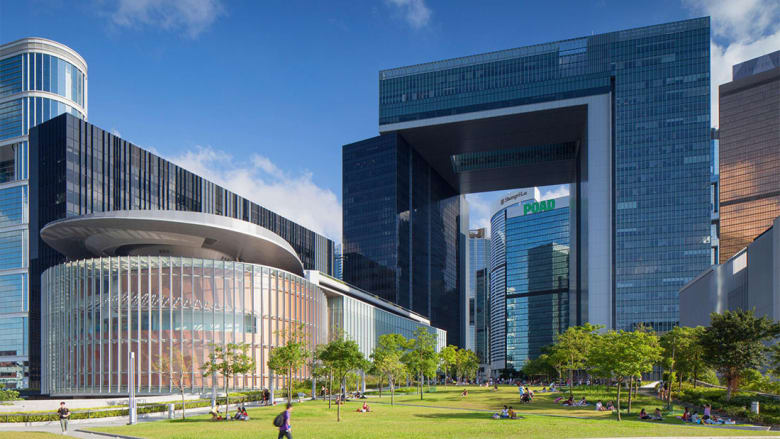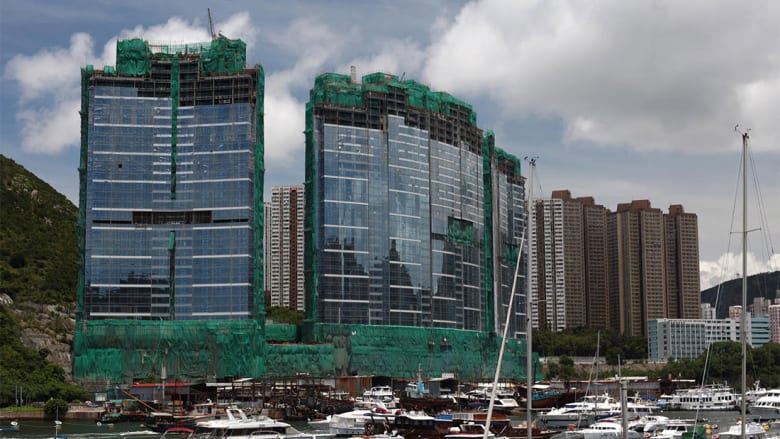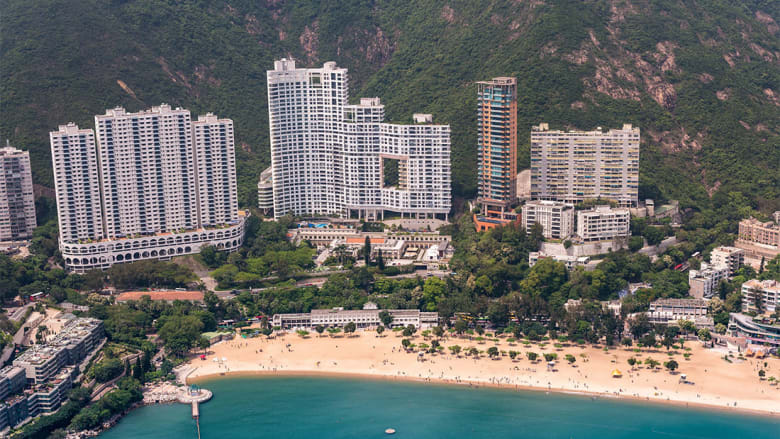دبي، الإمارات العربية المتحدة (CNN) -- عندما تتنزه بين ظلال ناطحات السحاب التي تملأ سماء هونغ كونغ، حتماً ستتفاجأ بعدد من البنايات، أهمها مجمع الشقق الفاخرة "ذا ريبالس باي،" التي تتميز بفجوة فارغة في وسطها.
ويعتقد سكّان محليون أن الهدف من فجوات هذه المباني هو أمر متعلق بنظام "فينغ شوي" الصيني الذي يجذب السعادة والحظ، حيث تعمل هذه الفجوات كبوابات لـ"تنانين الروح" التي تتخذ من التلال وراء ناطحات السحاب منزلاً لها، وقد تجلب الحظ السيء إذا ما أغلق الطريق أمامها.
ولكن، الحقيقة خلف هذه الفجوات تكمن في أسباب عملية أكثر، تتعدى حدود فلسفة "فينغ شوي."
وبني مجمع "ذا ريبالس باي" من قبل شركة "فنادق هونغ كونغ وشانغهاي" في العام 1986، بكلفة بلغت 38 مليون دولار. وتبلغ مساحة المجمع 88,733 مترا مربعا، ويحوي فجوة طولها 16 متراً وعرضها 24 متراً.
ووفقاً لمارتين سوير، مدير مجموعة "فنادق هونغ كونغ وشانغهاي،" فإن المجمع اعتمد الفجوة في تصميمه لأسباب جمالية، ومن أجل إضافة إحساس درامي إليها، مضيفاً: "نعتقد أنه الأول من نوعه في هونغ كونغ."
ورغم أن الفجوة في "ذا ريبالس باي" لم تكن مستوحاة من فلسفة "فينغ شوي،" إلا أنها ساعدت السكّان المحليين على تقبل المجمع الذي استبدل مبنى استعمارياً كان موجوداً في عشرينيات القرن الماضي.
أما أسطورة التنانين التي يتداولها المحليون حول الفجوة، فقد ظهرت تلك دون أي صلة لـ"فينغ شوي،" في ثمانينيات القرن الماضي، عندما بدأ المطورون بناء صفوف من المباني الشاهقة، سميت بـ"المباني الجدرانية" وظهرت عندما بدأ قطاع تنمية العقارات بالتوسع في ظل إعطاء الحكومة الأولوية لها كأساس للتنمية الاقتصادية، بحسب قول الأستاذ المساعد في الحفاظ على المباني المعمارية في جامعة هونغ كونغ، هويين لي.
ويشرح المهندس المعماري مايكل تشانغ، الذي يدير شركة "مايكل تشيانغ وشركائه المعماريين أن العديد من الناس بدأوا بإصدار شكاو على المباني المحيطة التي حجبت المشاهد الطبيعية وتيارات الهواء التي اعتادوا عليها.
وبعد تعرض المطورون للكثير من الضغوطات، نشر قطاع التخطيط في المدينة تقريراً بعنوان "دراسة لإمكانية إنشاء نظام تهوية جوي" والتي عرفت أيضاً باسم "AVA" في العام 2005. وقد أدى هذا التقرير إلى إنشاء مجموعة من الإرشادات المتعلقة بالتهوية الجوية للمشاريع التي تمولها الحكومة.
ورغم أن الارشادات هذه لم تُفرض قانونياً على المنشآت الخاصة، بحسب
لي، إلا أنها لعبت دوراً ثقافياً كبيراً، مضيفا: "في الكثير من
الأوقات، تطلب الحكومة ترك فراغ بين المباني في حال سمحت لك بالبناء.
ولكن قد لا تتوفر مساحة البناء الكافية لفعل ذلك، وبهذا وصلوا إلى حل
أوسط، وهو ترك فجوة في وسطها."
كما تتميز الفجوات أيضاً بفوائد أخرى مثل توفير مدخل للضوء، فضلاً عن
رمزيتها في أفق المدينة بعد أن أصبحت ظاهرة ثقافية متعارف
عليها.






